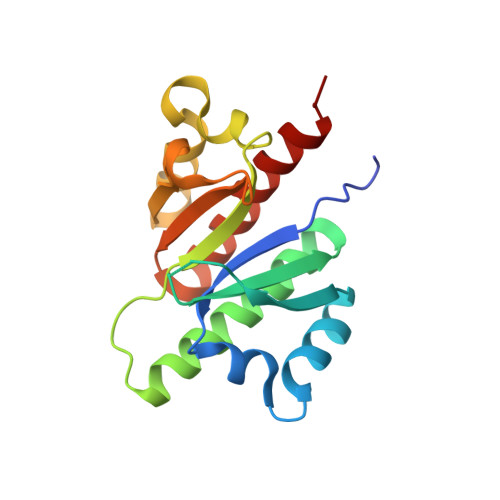Combinatorial recognition of clustered RNA elements by the multidomain RNA-binding protein IMP3.
Schneider, T., Hung, L.H., Aziz, M., Wilmen, A., Thaum, S., Wagner, J., Janowski, R., Muller, S., Schreiner, S., Friedhoff, P., Huttelmaier, S., Niessing, D., Sattler, M., Schlundt, A., Bindereif, A.(2019) Nat Commun 10: 2266-2266
- PubMed: 31118463
- DOI: https://doi.org/10.1038/s41467-019-09769-8
- Primary Citation of Related Structures:
6GQE - PubMed Abstract:
How multidomain RNA-binding proteins recognize their specific target sequences, based on a combinatorial code, represents a fundamental unsolved question and has not been studied systematically so far. Here we focus on a prototypical multidomain RNA-binding protein, IMP3 (also called IGF2BP3), which contains six RNA-binding domains (RBDs): four KH and two RRM domains. We establish an integrative systematic strategy, combining single-domain-resolved SELEX-seq, motif-spacing analyses, in vivo iCLIP, functional validation assays, and structural biology. This approach identifies the RNA-binding specificity and RNP topology of IMP3, involving all six RBDs and a cluster of up to five distinct and appropriately spaced CA-rich and GGC-core RNA elements, covering a >100 nucleotide-long target RNA region. Our generally applicable approach explains both specificity and flexibility of IMP3-RNA recognition, allows the prediction of IMP3 targets, and provides a paradigm for the function of multivalent interactions with multidomain RNA-binding proteins in gene regulation.
- Institute of Biochemistry, Justus-Liebig-University of Giessen, 35392, Giessen, Germany.
Organizational Affiliation:
















